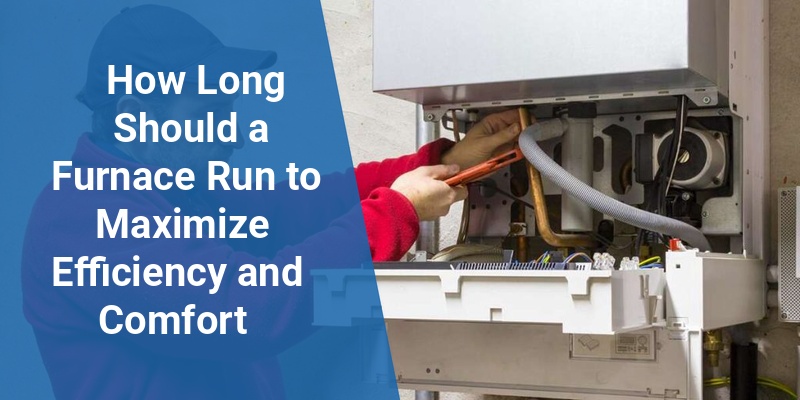Determining how long a furnace should run is essential for maintaining home comfort and energy efficiency. Furnace run times vary based on factors such as climate, home insulation, thermostat settings, and furnace capacity. Running a furnace too long or too short can lead to increased energy bills and uneven heating. This article provides detailed insights into optimal furnace run times, signs of inefficient operation, and tips to enhance furnace performance and longevity.
| Factor | Impact on Furnace Run Time |
|---|---|
| Climate | Colder climates require longer heating cycles. |
| Home Insulation | Better insulation reduces furnace run time. |
| Thermostat Settings | Higher settings increase run time; programmable thermostats optimize cycles. |
| Furnace Size | Correctly sized furnaces run efficiently; oversized or undersized units can cause short cycling or long runs. |
Understanding Furnace Run Time and Its Importance
The furnace run time refers to the duration the heating system actively operates to maintain your desired indoor temperature. This period varies widely due to factors like outdoor temperatures and home heat loss. Optimal furnace run time balances comfort, energy consumption, and system durability. Short, frequent cycles can strain the furnace, reduce efficiency, and increase wear, while excessively long runs may waste energy and lead to uneven heating.
Recommended Furnace Run Time for Different Conditions
Generally, a furnace should run long enough to cycle on and off about 3 to 5 times per hour during peak heating demand. This translates to run cycles lasting approximately 10 to 20 minutes depending on weather conditions and home factors.
- Mild weather: Furnaces may run for shorter durations—5 to 10 minutes per cycle, fewer cycles needed.
- Cold weather: Run times increase to 15 to 20 minutes or longer to maintain indoor comfort due to increased heat loss.
- Well-insulated homes: Reduced run times and fewer cycles as heat retention minimizes furnace workload.
- Older or poorly insulated homes: Longer run times because of rapid heat loss.
Signs That Your Furnace May Be Running Too Long or Too Short
Noticing furnace behavior can help diagnose run time issues. Common indicators include:
- Short Cycling: Furnace turns on and off frequently (less than 5 minutes per cycle), possibly signaling an oversized unit or thermostat issues.
- Extended Run Time: Furnace runs continuously or for very long cycles, which could mean poor insulation, dirty filters, or undersized equipment.
- Increased Energy Bills: Sudden spikes in heating costs may reflect inefficient furnace operation.
- Uneven Heating: Some rooms may feel colder, suggesting furnace struggles to maintain consistent warmth.
Factors Affecting Optimal Furnace Run Time
Home Size and Insulation
Large or poorly insulated homes lose heat quickly, compelling furnaces to run longer. Improving insulation and sealing leaks can reduce run times significantly, enhancing comfort and reducing energy use.
Thermostat Settings and Type
Location and programming of thermostats influence cycle length. Using a programmable thermostat helps maintain efficient run times by adjusting settings according to daily schedules.
Furnace Sizing
Correct furnace sizing is critical. Oversized furnaces heat rooms too quickly, causing short cycles, while undersized units run constantly trying to reach the temperature setpoint.
Call 888-906-9139 for Free Local HVAC Quotes – No Obligation, Just Savings!
Maintenance and Filter Condition
Dirty filters or neglected maintenance can restrict airflow, forcing the furnace to operate longer to heat the home effectively. Regular filter replacement and servicing optimize run times.
Tips to Optimize Furnace Run Times and Efficiency
- Install a Programmable Thermostat: Allows for heating schedules that reduce unnecessary furnace operation.
- Improve Home Insulation: Sealing windows, doors, and adding insulation cuts heat loss and run time.
- Schedule Regular Maintenance: Annual inspections ensure components function correctly and prevent inefficiencies.
- Replace Air Filters Regularly: Clean filters improve airflow and prevent excessive furnace operation.
- Check for Proper Furnace Sizing: Consult HVAC professionals to confirm your furnace matches home requirements.
- Use Zoning Systems: Heat only occupied areas to avoid long run times for unused spaces.
How Thermostat Settings Influence Furnace Run Time
Thermostat temperature settings directly impact furnace cycling. Setting the thermostat too high can cause the furnace to run longer, consuming more energy without significantly increasing comfort. Conversely, too low a setting might result in frequent short cycles and uneven warmth. Smart or programmable thermostats can balance these factors by adjusting temperature throughout the day for optimal run times and energy efficiency.
Energy Efficiency and Furnace Run Time
Furnace efficiency is linked closely to run times. Modern high-efficiency furnaces are designed to operate at steady, longer cycles rather than short frequent bursts, which reduces heat loss and energy waste. Monitoring run time via smart thermostats or HVAC systems offers homeowners insights to adjust settings or identify maintenance needs, leading to cost savings and environmental benefits.
When To Call a Professional About Furnace Run Times
If your furnace exhibits persistent short cycling, continuous running, or inconsistent heating despite following optimization tips, professional evaluation is necessary. HVAC technicians use diagnostic tools to measure furnace run times, airflow, and system efficiency, then recommend repairs or upgrades. Prompt service can prevent costly breakdowns and ensure your heating system operates optimally.
